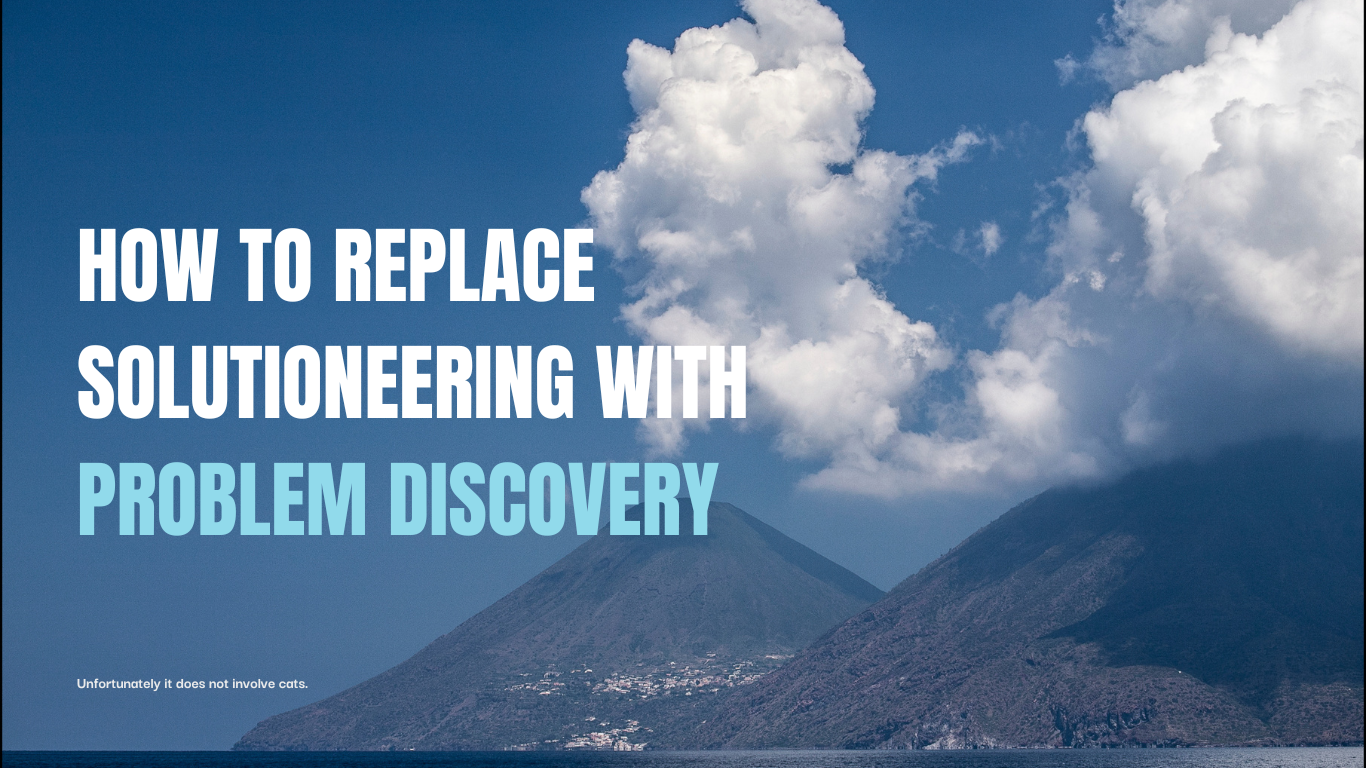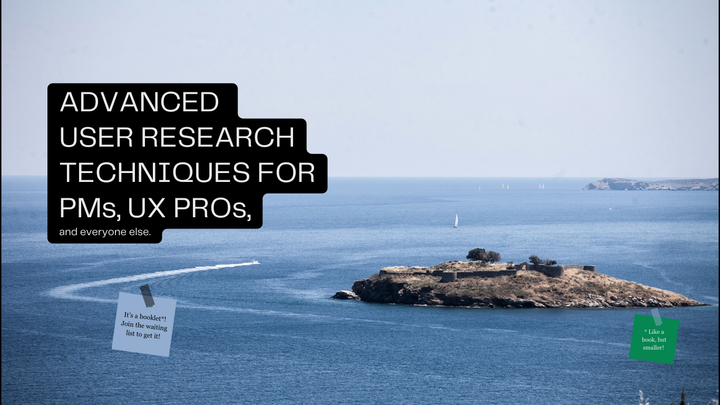A Discovery-first mindset: replace Solutioneering with Problem Discovery
This article is dedicated to those who want to escape the seductive yet delusional practice of solutioneering and get their hands messy with Discovery.

This article is an excerpt from a full-length guidebook. If you like the ideas explained below, you can purchase the full PDF guide (that contains as bonus document with all the templates you need to get started with Product Discovery) at the link below:
We live in a time when being a problem-solver is the most sought-after skill one can have. It’s the most important quality one can possess. We imagine that by being agile and always finding solutions, we’ll get a boost toward success, leading to better jobs, contracts, partnerships, and, of course, the glorification of our ego. According to a survey by the National Association of Colleges and Employers, 86% of employers prioritize problem-solving skills when hiring. 57% of recruiters consider problem-solving skills to be among the most important attributes to highlight on a resume, alongside communication and teamwork skills.
“If I were given one hour to save the planet, I would spend 59 minutes defining the problem and one minute resolving it,” Albert Einstein said.
This makes me wonder: are we truly solving anything, or are we so delusional that we switch into solutioneering and act without any prior discovery or definition of what we’re aiming to achieve? Do we blindly rush into a desperate race to always have an answer to everything without taking a moment to think about what we’re struggling with?
This phase is often skipped by most companies, but the advantages of discoveries are remarkable. Projects that have a discovery are more likely to be successful. It cuts the risk of failure by 75% and increases the chance of success by 59%.
As such, this essay will unpack what Discovery is, why it’s essential, and how it sets the course for successful product development.
What is Product Discovery?
Product discovery is the initial phase of the design process dedicated to understanding the problem at hand and identifying who is affected by it. It uncovers insights that weren’t previously known, not just validating assumptions or rushing into design sprints. Discovery becomes essential when the project is shrouded in unknowns.
Methodologies for Discovery:
The Double Diamond Method: Discovery often follows the double diamond model, which splits the process into two phases - discovering and defining the problem, and then developing and delivering solutions.

Why Use It?
The Double Diamond helps you avoid jumping to solutions too early. It forces you to spend time discovering and defining the problem before developing and delivering solutions, thus making sure you are solving the right issue and not just fixing symptoms. It keeps the process organized and focused, making sure you end up with a solution that works.

A Guide to Product Discovery
The PDF course explains the strategies and the theory, giving you the know-how, while the template contains everything you need to get started with Product Discovery having everything you need in the same place!
Continuous Discovery
“Continuous product discovery” means constantly learning and adapting as new information comes to light.
Please do not confuse this with the CDH methodology which is a framework I do not recommend nor endorse in any way as it lacks a clear definition of how to do it.
Unlike traditional approaches where you might do a big chunk of research and then launch a solution, Continuous Discovery keeps the feedback loop open. This means you’re always learning and adapting based on what you discover.
When Do You Need To Do Discovery?
There are various scenarios when you need to do discovery, but oftentimes, always is a good answer. But to be more pragmatic, Discovery is useful particularly when there’s a lot of uncertainty.
How to do Discovery?
- Framing Problems Effectively
- Ask the right questions to frame the problem.
- Applying the Why technique
How to write a problem statement?
A problem statement should be concise, context-rich, and focused on defining the issue without suggesting solutions. It serves as a guide for discovery and a tool for communicating with stakeholders.
Research in Discovery
Getting to the “truth” is done by researching. That way one can understand the problem landscape and identify potential solutions. This involves a combination of secondary research, stakeholder research, and user research, each providing valuable insights into different aspects of the problem.
Mapping Out the Problem Space
Mapping is a valuable tool in discovery, helping to visualize and understand the problem space.
Concluding the Discovery Phase
What you will have after a Discovery Phase is a good understanding and definition of the problem you need to solve and that is the best way to start a Product Development journey.



